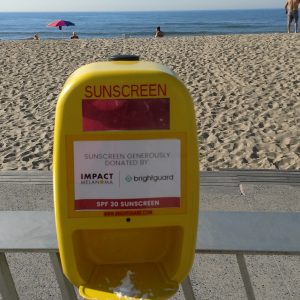In Situ Marketing.
 I was on the boardwalk at Rockaway Beach this past weekend and came across this little dispensing display. It was sampled SPF 30 sun screen by Brightguard.
I was on the boardwalk at Rockaway Beach this past weekend and came across this little dispensing display. It was sampled SPF 30 sun screen by Brightguard.
“In Situ” marketing is an exciting new addition to the new advertising arsenal. Placing ads or doing sampling in a places of product or service impact is the best form of marketing.
On the boardwalk at Rockaway beach, there are a number of food pavilions. A good number offer healthier alternative foods. (I had the most amazing best veggie burger there.) Lots of smoothies, watermelon drinks, avocado toast with virgin olive oil on grain bread — suffice it to say, people who like healthy go to these eateries on the beach. This would be a good place for an ad placement for say a cold pressed juice company.
The In Situ ad placement approach is not about reach and frequency, it’s about mindset intent. In Situ is a multiplier for effectiveness. A fish where the fish are approach.
If you want to dial up your comms planning and media results smart to think In Situ,
Peace.
